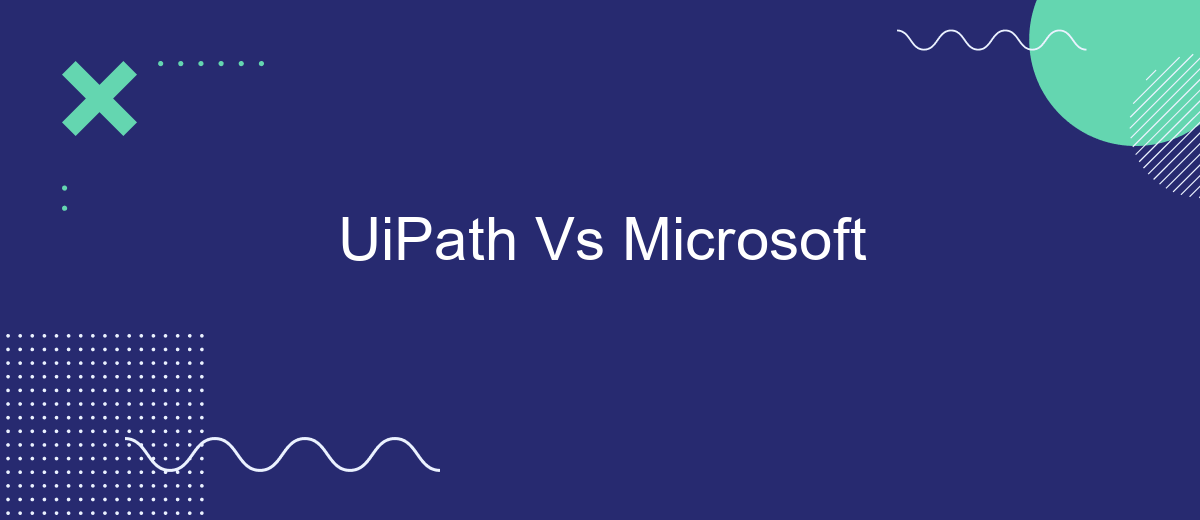In the rapidly evolving landscape of robotic process automation (RPA), UiPath and Microsoft stand out as two prominent contenders. This article delves into a comparative analysis of these industry giants, exploring their unique features, capabilities, and overall impact on business efficiency. By understanding their strengths and differences, organizations can make informed decisions on which platform best aligns with their automation goals.
Introduction
In the rapidly evolving world of automation, choosing the right tool can significantly impact the efficiency and success of your projects. Two of the most prominent players in this domain are UiPath and Microsoft. Both offer robust solutions for automating repetitive tasks, but they cater to different needs and have unique strengths.
- UiPath: Known for its user-friendly interface and extensive library of pre-built automation components.
- Microsoft: Offers a comprehensive suite of tools integrated within its ecosystem, including Power Automate.
- SaveMyLeads: Facilitates seamless integration between various platforms, enhancing the capabilities of both UiPath and Microsoft solutions.
Understanding the key differences and advantages of UiPath and Microsoft can help you make an informed decision tailored to your specific requirements. This article will explore their features, ease of use, and integration capabilities, providing insights to help you choose the best tool for your automation needs.
Capabilities Comparison

UiPath and Microsoft Power Automate both offer robust capabilities for automating business processes, but they differ in their approach and features. UiPath excels in its advanced robotic process automation (RPA) capabilities, providing a wide range of pre-built activities and integrations. It is particularly strong in handling complex workflows and offers extensive support for attended and unattended automation. Additionally, UiPath provides a user-friendly interface for designing automation tasks, making it accessible for both technical and non-technical users.
On the other hand, Microsoft Power Automate integrates seamlessly with the Microsoft ecosystem, leveraging tools like Office 365, Dynamics 365, and Azure. This integration makes it a powerful choice for organizations already invested in Microsoft products. Power Automate also offers AI-driven capabilities and connectors to various third-party applications. For businesses looking to streamline their integrations, services like SaveMyLeads can be used to automate data transfer between different platforms, enhancing the overall efficiency of the automation process. Both platforms have their unique strengths, and the choice between them depends on specific business needs and existing technological infrastructure.
Pricing Comparison

When comparing the pricing structures of UiPath and Microsoft Power Automate, it's essential to consider the different tiers and features each platform offers. Both tools provide flexible pricing models to accommodate various business needs, but there are some key differences to note.
- UiPath offers a free Community Edition for small teams and individual developers, while Microsoft Power Automate provides a limited free tier with basic automation capabilities.
- For enterprise solutions, UiPath's pricing starts at approximately ,000 per year per user, whereas Microsoft Power Automate's per-user plan begins at per month, with additional costs for premium connectors and advanced features.
- Both platforms offer volume discounts and custom pricing for larger organizations, but UiPath tends to be more expensive due to its extensive features and robust capabilities.
Ultimately, the choice between UiPath and Microsoft Power Automate will depend on your organization's specific needs and budget. For businesses looking to streamline integrations and automate workflows without significant upfront costs, services like SaveMyLeads can also provide valuable support and cost-effective solutions.
Pros and Cons Analysis

When comparing UiPath and Microsoft Power Automate, it's essential to weigh their respective strengths and weaknesses. Both platforms offer robust automation capabilities, but they cater to different needs and user bases.
UiPath is known for its extensive features and advanced capabilities, making it a preferred choice for large enterprises. On the other hand, Microsoft Power Automate is deeply integrated with the Microsoft ecosystem, offering seamless connectivity with other Microsoft products, which can be advantageous for businesses already using these tools.
- UiPath Pros: Advanced automation features, strong community support, extensive training resources.
- UiPath Cons: Steeper learning curve, higher cost for enterprise features.
- Microsoft Power Automate Pros: Easy integration with Microsoft products, user-friendly interface, cost-effective for small to medium businesses.
- Microsoft Power Automate Cons: Limited advanced features compared to UiPath, less suitable for complex automation tasks.
For businesses looking to streamline their integration processes, services like SaveMyLeads can be incredibly useful. SaveMyLeads simplifies the setup of integrations between various platforms, enhancing the efficiency of both UiPath and Microsoft Power Automate implementations.
Conclusion
In conclusion, both UiPath and Microsoft offer robust automation solutions that cater to different needs and preferences. UiPath excels in providing user-friendly, scalable automation tools that are ideal for businesses looking for flexibility and ease of use. On the other hand, Microsoft's automation solutions are deeply integrated with its ecosystem, making them a strong choice for organizations already invested in Microsoft technologies.
When it comes to setting up integrations, services like SaveMyLeads can significantly streamline the process, ensuring that your automation workflows are seamlessly connected with various applications. This can be particularly beneficial for businesses aiming to enhance their operational efficiency without spending excessive time on manual integrations. Ultimately, the choice between UiPath and Microsoft will depend on your specific requirements, existing infrastructure, and long-term business goals.


FAQ
What are the main differences between UiPath and Microsoft Power Automate?
Which platform is more user-friendly for beginners?
Can I integrate third-party applications with both UiPath and Microsoft Power Automate?
How do licensing costs compare between UiPath and Microsoft Power Automate?
Which platform is better suited for large-scale enterprise automation?
Don't waste another minute manually transferring leads from Facebook to other systems. SaveMyLeads is a simple and effective tool that will allow you to automate this process so that you don't have to spend time on the routine. Try SaveMyLeads features, make sure that this tool will relieve your employees and after 5 minutes of settings your business will start working faster.
